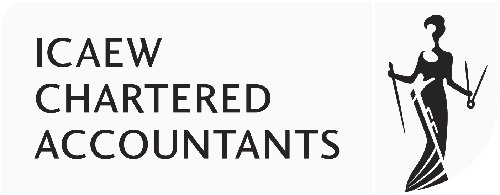UK and International Tax news
Tax Deductibility Of Corporate Interest Expense
Friday 13th November 2015
HMRC has recently issued a consultation document on the proposals contained in the OECD Report on Limiting Base Erosion Involving Interest Deductions And Other Financial Payments – Action 4 of the BEPS project.
OECD’s October 2015 report on Action 4 sets out recommendations regarding best practices in the design of rules to prevent base erosion through the use of interest expense. Through the development of the OECD report on best practices on interest deducibility, countries have agreed a general tax policy direction and it is expected that there will be convergence over time through the implementation of agreed common approaches.
To meet the OECD recommendations, HMRC has indicated that the UK would need to introduce a new general rule for restricting interest and recognises this would be a major change to the UK corporate tax regime, requiring careful consideration to ensure any new rules work appropriately, including taking into account the beneficial impact of an 18% corporation tax rate.
The OECD report identifies three basic scenarios in which BEPS involving interest and payments economically equivalent to interest can arise:
• groups placing higher levels of third party debt in high tax countries
• groups using intragroup loans to generate interest deductions greatly in excess of the group’s actual third party interest expense
• groups using third party or intragroup financing to fund the generation of tax exempt income
The recommended approach to address these risks has at its core a rule which limits net deductions for interest to a percentage of a company’s earnings before interest, taxes, depreciation and amortisation (EBITDA). To be effective, this fixed ratio rule would also apply to payments economically equivalent to interest. To ensure that countries apply a fixed ratio that is low enough to tackle BEPS, while recognising that not all countries are in the same position in terms of the size and make-up of their economies, the recommended approach includes a range of possible ratios of between 10% and 30%. The report also identifies some of the factors which countries should take into account in setting their fixed ratio within this corridor.
The report states that countries introducing a fixed ratio rule may choose to include an alternative restriction which would allow a deduction for net interest expense determined by the level of the net interest/EBITDA ratio of its worldwide group. Where the interest deduction permitted under this group ratio rule exceeded the deduction permitted by the fixed ratio rule, then the higher limit would generally apply.
A group ratio rule based on earnings may be replaced by other group ratio rules, such as the ‘equity escape’ rule (which compares tax-adjusted measures of an entity’s level of equity and assets to those of its group) currently in place in some countries. Countries may also choose not to introduce any group ratio rule.
The recommended approach also allows countries to supplement the fixed ratio rule with other provisions that reduce the impact of the rules on either entities or circumstances which pose less BEPS risk, such as:
• a de minimis threshold which carves-out companies which have a low level of net interest expense. Where a group has more than one entity in a country, the OECD recommends that the threshold be applied to the total net interest expense of the local group;
• an exclusion for interest paid to third party lenders on loans used to fund public-benefit projects, subject to conditions. This exclusion is intended to recognise that an entity may be highly leveraged but, due to the nature of the projects and the close link to the public sector, the BEPS risk is reduced;
• the carry forward of disallowed interest expense and/or unused interest capacity (which arises where a company’s actual net interest deductions are below the fixed ratio) for use in future years. This would reduce the impact of earnings volatility on the ability of an entity to deduct interest expense. The carry forward of disallowed interest expense would also help companies which incur interest expenses on long-term investments that are expected to generate taxable income only in later years, and would allow companies with losses to claim interest deductions when they return to profit.
The report also recommends that the approach be supported by targeted rules to prevent its circumvention, for example by artificially reducing the level of net interest expense. It also recommends that countries consider introducing rules to tackle specific BEPS risks not addressed by the recommended approach, such as where an entity without net interest expense shelters interest income.
Finally, the report recognises that the banking and insurance sectors have specific features which must be taken into account and therefore there is a need to develop suitable and specific rules that address BEPS risks in these sectors.
The OECD will conduct further technical work on specific areas of the recommended approach, including the detailed operation of the worldwide group ratio rule and the specific rules to address risks posed by banking and insurance groups. This work is expected to be completed in 2016.
A key question for consideration is when it would be appropriate to introduce new rules in the UK. Many countries already have rules that provide a structural restriction on tax relief for interest expense. Consideration will need to be given to if and when other countries act upon the recommendations in the OECD report. Some businesses are already starting to respond to the outputs of the BEPS project in general.
A balance will need to be struck between protecting the UK tax base and allowing businesses sufficient time to adapt to the new rules. If new rules are introduced in the UK it is unlikely this would be before 1 April 2017.
This consultation runs to 14 January 2016.
If you would like more information on the condoc, please contact Keith Rushen on 0207 486 2378.
Contact Us


